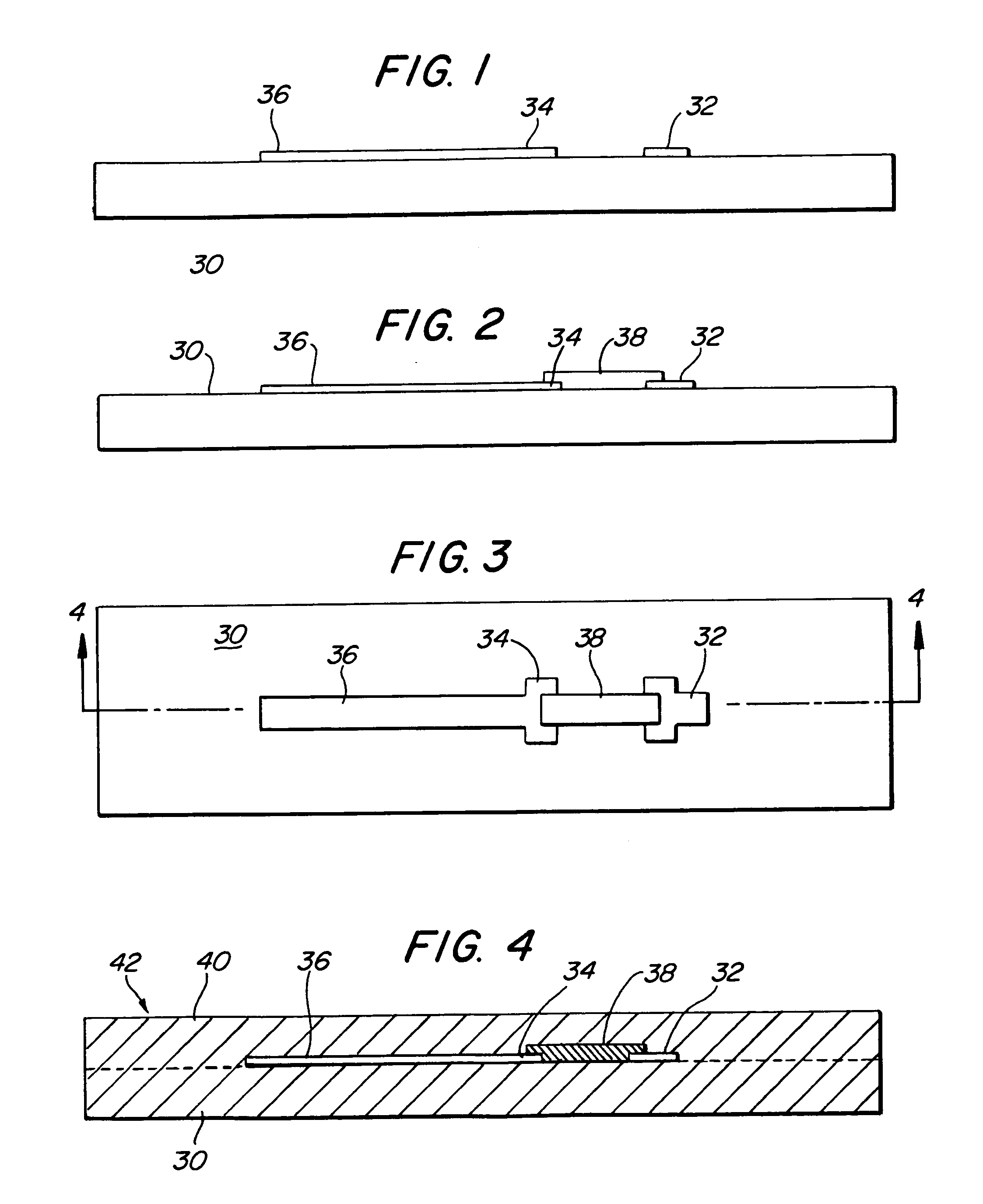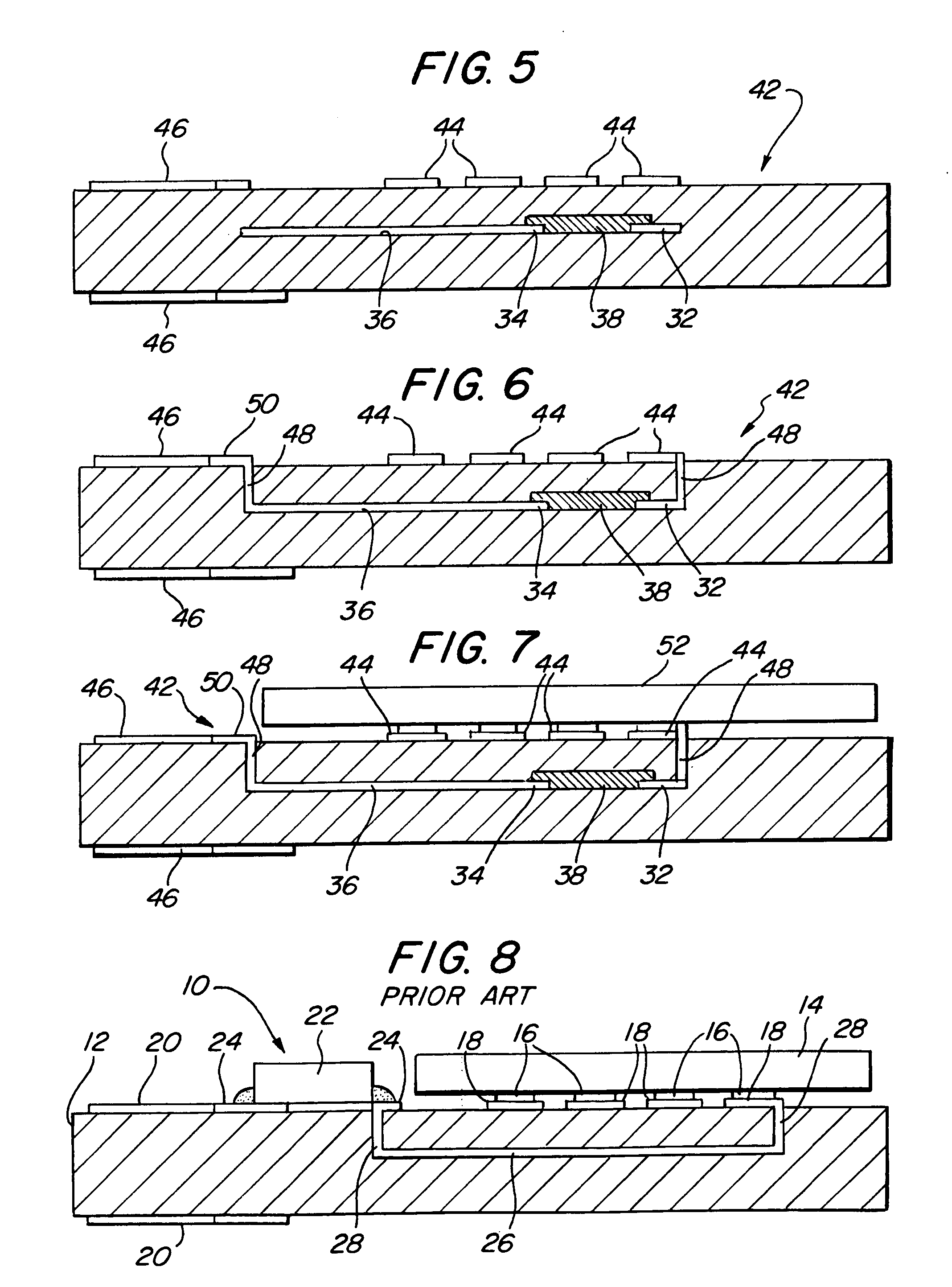Printed circuit board memory module with embedded passive components
a technology of passive components and printed circuit boards, applied in the field of printed circuit boards, can solve problems such as performance-affecting variances from nominal resistances, and achieve the effects of precise output signals, minimizing the surface area of pc boards, and minimizing the length of conductive paths
- Summary
- Abstract
- Description
- Claims
- Application Information
AI Technical Summary
Benefits of technology
Problems solved by technology
Method used
Image
Examples
Embodiment Construction
[0022] Referring first to FIG. 8, a typical, prior art PC board memory module 10 is shown. The module 10 comprises a printed circuit board 12 on which is mounted a plurality of solid state memory components 14, such as DRAMs, only one of which is shown. The DRAM 14 typically has short terminal contacts 16, which may be of the type known as a “ball grid array.” The DRAM terminal contacts 16, in turn, are soldered to conductive contact pads 18 formed on the surface of the board 12 by conventional means, well-known in the art. One edge of the board 12 is provided with a plurality of connector contacts 20, which allow the board 12 to be plugged into a mating socket (not shown) on a larger board or “motherboard” (not shown).
[0023] Passive components, such as a termination resistor 22, are mounted on the surface of the board 12 between the DRAM 14 and the connector contacts 20. The termination resistor 22 is a typical “surface mount technology” (SMT) component, which is soldered to condu...
PUM
 Login to View More
Login to View More Abstract
Description
Claims
Application Information
 Login to View More
Login to View More - R&D
- Intellectual Property
- Life Sciences
- Materials
- Tech Scout
- Unparalleled Data Quality
- Higher Quality Content
- 60% Fewer Hallucinations
Browse by: Latest US Patents, China's latest patents, Technical Efficacy Thesaurus, Application Domain, Technology Topic, Popular Technical Reports.
© 2025 PatSnap. All rights reserved.Legal|Privacy policy|Modern Slavery Act Transparency Statement|Sitemap|About US| Contact US: help@patsnap.com



